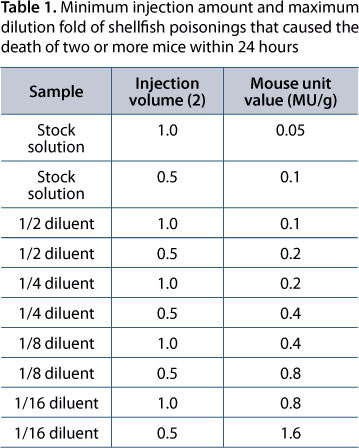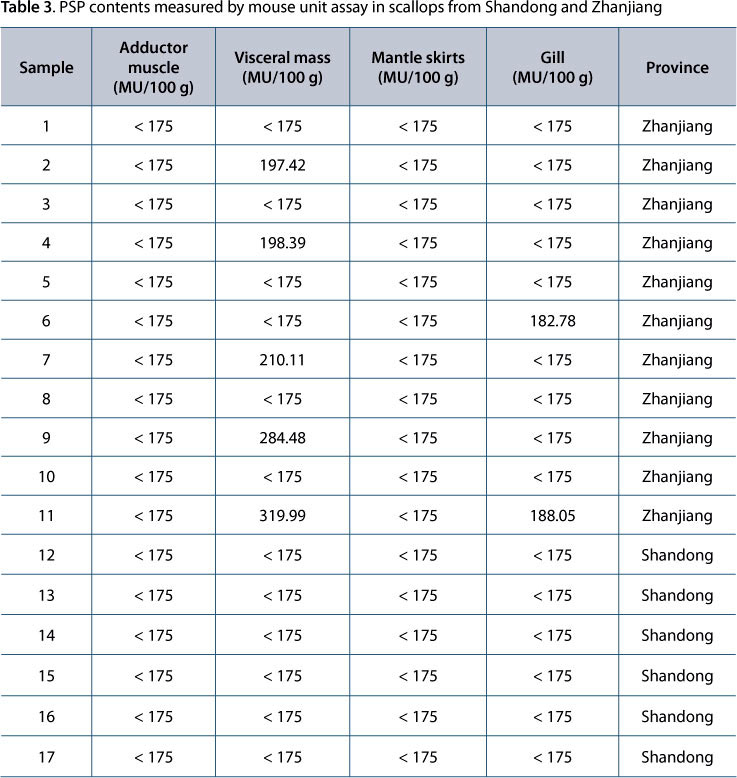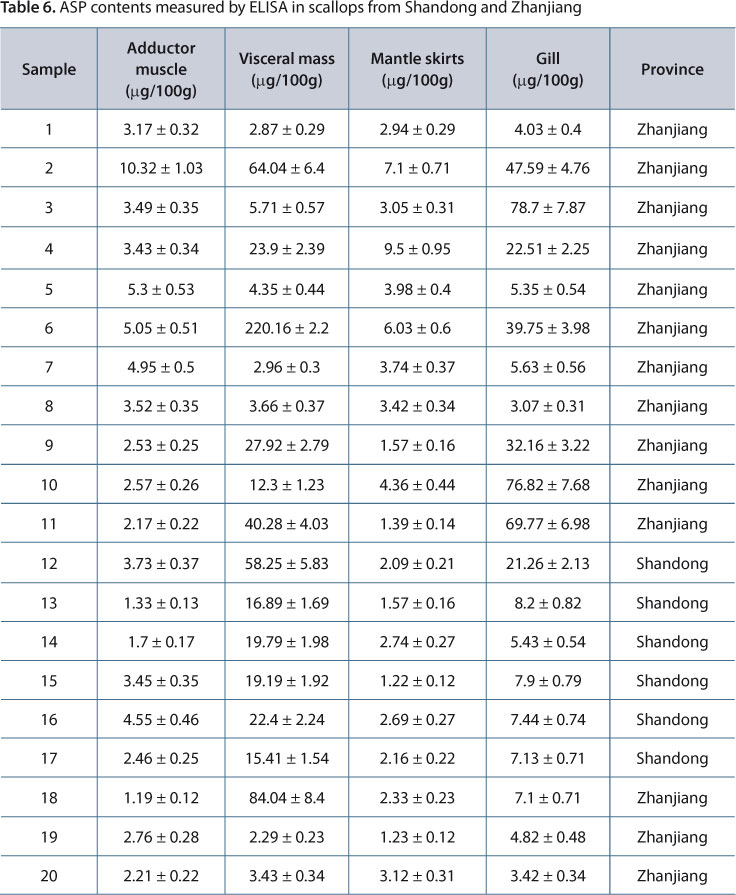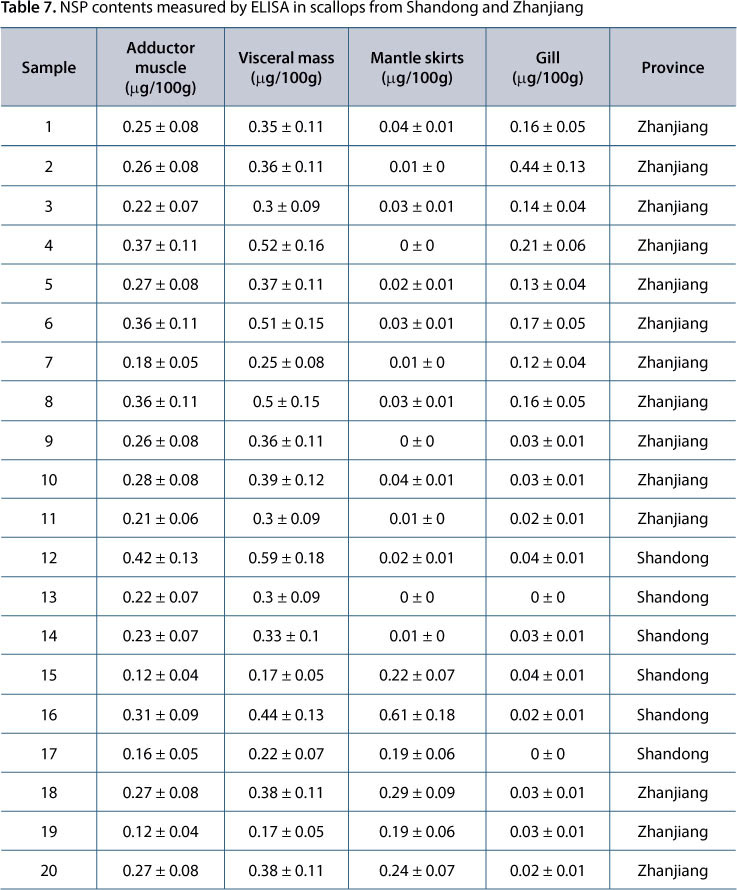To evaluate scallop safety in the Guangzhou seafood market, contents of shellfish toxins in adductor muscle, mantle skirts, gills and visceral mass of scallops were examined using enzyme-linked immunosorbent assay (ELISA) and mouse unit assay. The results showed that: paralytic shellfish poisoning contents were up to 37.44 μg/100 g by ELISA and 319.99 MU/100 g by mouse unit assay, which did not exceed the limits of national standards (80 μg/100g and 400 MU/100 g); the contents of diarrhetic shellfish poisoning were 142.04 μg/100g and 0.2 MU/100 g, which exceeded the national standard limits (60 μg/100g); neurotoxic shellfish poisoning was undetectable; the contents of amnesic shellfish poisoning reached 220.12 μg/100g (no limit value could be referred to) . In addition, these poisons were present mainly in visceral mass and gills rather than adductor muscle and mantle skirts, suggesting that these toxins accumulate in a tissue-specific manner.
paralytic shellfish poisoning; diarrheic shellfish poisoning; neurotoxic shellfish poisoning; amnesic shellfish poisoning; enzyme-linked immunosorbent assay; mouse unit assay








